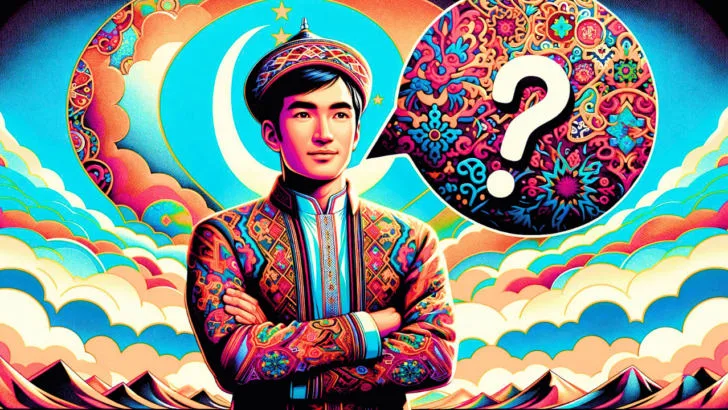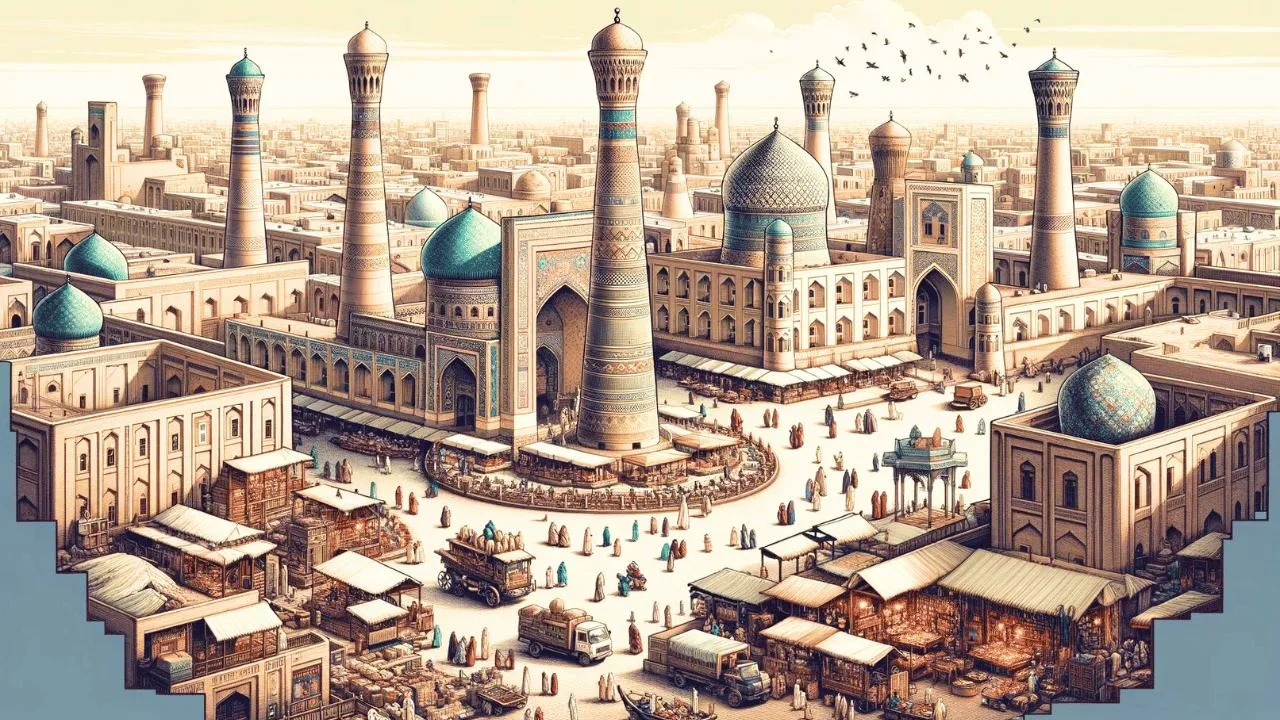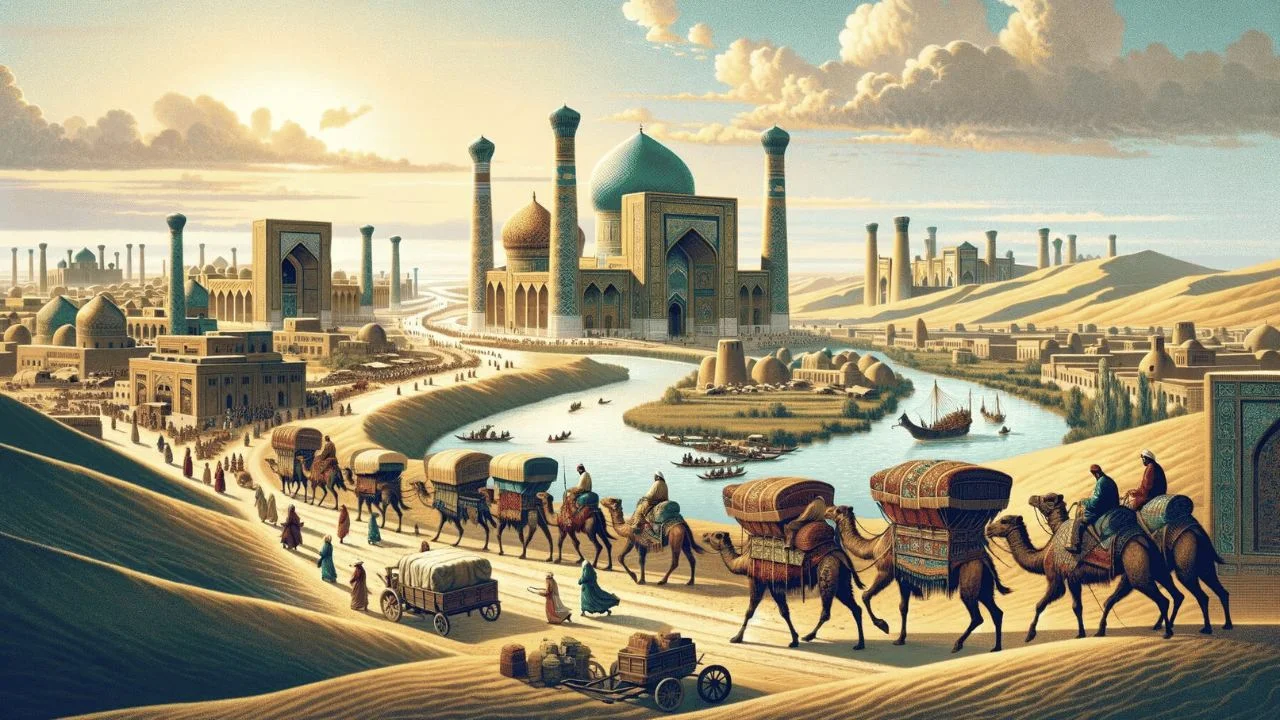In the heart of Central Asia, Uzbekistan stands as a testament to the power of linguistic diversity, shaped by its history as a Silk Road nexus.
This land, with its ancient cities and rich cultural heritage, is home to a fascinating array of languages including Uzbek, Russian, Tajik, and Karakalpak, among others.
Dive into the linguistic landscape of Uzbekistan, where language is not just a means of communication but a vibrant expression of the nation’s soul.
1. Over 85% of the Population Speaks Uzbek
Uzbek, a Turkic language, is the cornerstone of Uzbekistan’s national identity, spoken by more than 85% of the population. Its widespread use underscores the country’s post-Soviet efforts to promote national unity and cultural heritage.
The language’s rich literary tradition, dating back to the 15th century with poets like Ali-Shir Nava’i, continues to influence Uzbek society profoundly.
2. Russian Retains Its Status as a Key Language
Despite Uzbekistan’s sovereignty from the Soviet Union, Russian remains a critical language, especially in urban areas and the spheres of business, science, and education.
This enduring presence highlights the complex layers of Uzbekistan’s history and its ongoing ties with Russian-speaking countries, facilitating a multicultural dialogue within and beyond its borders.
3. Tajik is Predominantly Spoken in Historical Cities
Tajik, a Persian dialect, flourishes in the historical cities of Bukhara and Samarkand, where it’s spoken by the ethnic Tajik minority.
This language’s prevalence in these areas not only underscores the historical Persian influence but also adds to the cultural tapestry, with Tajik literature and poetry playing a significant role in the region’s cultural expression.
4. Karakalpak Has Official Status in Its Autonomous Republic
Karakalpak, recognized alongside Uzbek as an official language within the Republic of Karakalpakstan, plays a crucial role in preserving the identity of the Karakalpak people.
Efforts to maintain the language include education, media, and cultural projects, reflecting the broader endeavor to safeguard Uzbekistan’s diverse heritage.
5. Silk Road History Influenced Linguistic Diversity
The Silk Road, an ancient network of trade routes, played a pivotal role in shaping the linguistic landscape of Uzbekistan. It facilitated not just the exchange of goods but also the mingling of cultures and languages, enriching the region’s linguistic diversity.
Languages such as Sogdian, an Eastern Iranian language, thrived along these routes, acting as lingua franca for traders and travelers.
This historical blend of languages and cultures has left a lasting imprint on the modern Uzbek language, incorporating words and influences from across Eurasia.
6. Russian Dominates in Science and Higher Education
The prominence of Russian in Uzbekistan’s scientific and academic institutions underscores its importance in higher learning and research.
This linguistic preference facilitates international collaboration and access to a broad spectrum of scientific literature, maintaining the country’s competitive edge in global research and education.
7. Minority Languages Add to the Cultural Mosaic
Uzbekistan’s cultural diversity is further enriched by minority languages like Kazakh, Kyrgyz, and Turkmen, each spoken by distinct ethnic communities.
Kazakh is predominantly spoken in areas close to the Kazakh border, representing about 3% of the population.
Kyrgyz, found near the Kyrgyzstan border, accounts for less than 1%, while Turkmen, mainly in regions adjacent to Turkmenistan, is spoken by approximately 1.5% of the population.
These languages reflect the intricate ethnic mosaic of Uzbekistan, with preservation efforts underscoring the nation’s dedication to its rich cultural heritage.

Hey fellow Linguaholics! It’s me, Marcel. I am the proud owner of linguaholic.com. Languages have always been my passion and I have studied Linguistics, Computational Linguistics and Sinology at the University of Zurich. It is my utmost pleasure to share with all of you guys what I know about languages and linguistics in general.




